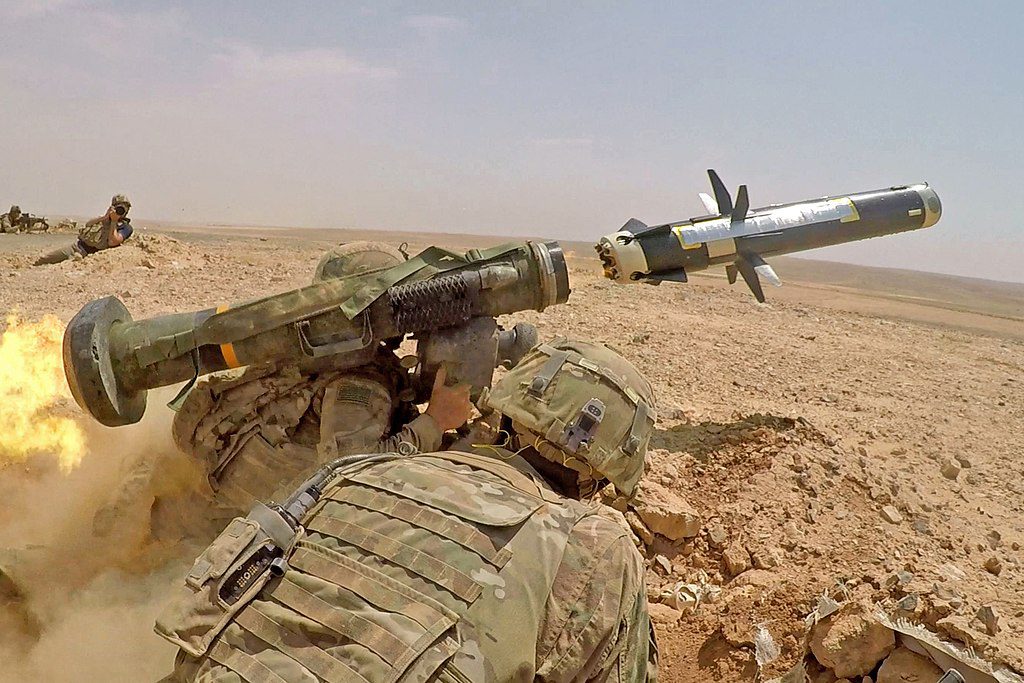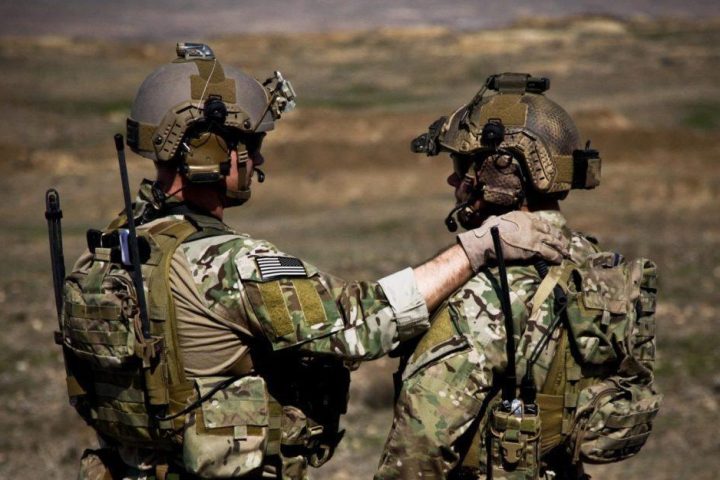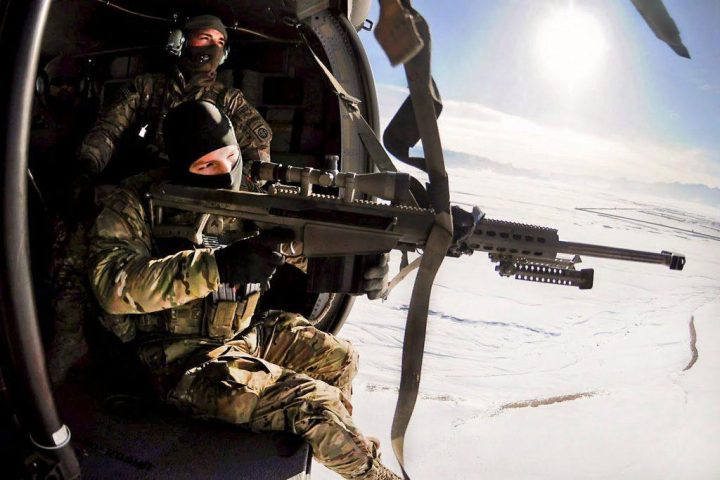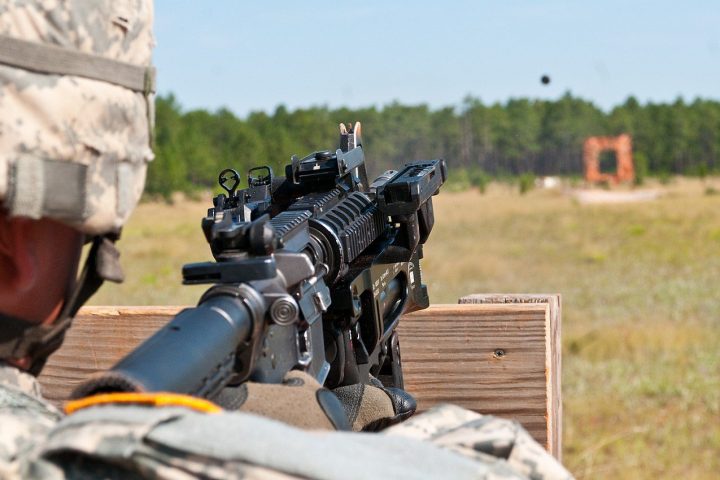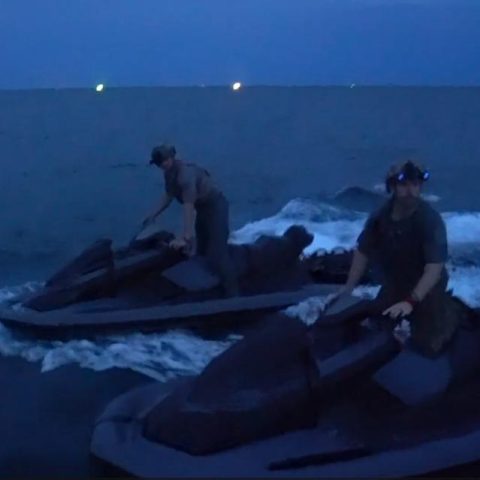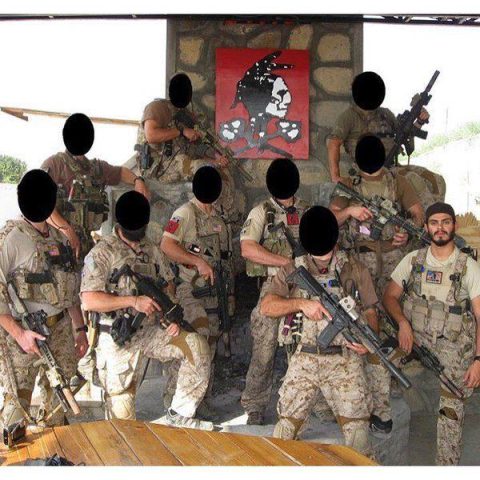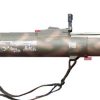The FGM-148 Javelin is a state-of-art anti-tank weapon. It was introduced in service portable anti-tank missile system in 1996, and since then, it has been continuously upgraded. It became a significant game changer in infantry anti-tank weapons because of its unique capability at the time; it could defeat modern tanks by hitting them from above.
Introduction
The FGM-148 Javelin is an infantry anti-tank weapon with the primary purpose of giving infantry something with which they can resist tank attacks & not have the urge to run. Its fire-and-forget design uses automatic infrared guidance that allows the user to seek cover immediately after launch. Its predecessors mainly used wire-guided systems, like the system used by the Dragon, which requires the user to guide the weapon throughout the engagement.
It is shoulder-fired but can also be deployed from multiple platforms installed on tracked, wheeled, or amphibious vehicles. Javelin is a highly capable weapon with an advanced fire control system that enables them to be used day or night effectively.
Design
The FGM-148 Javelin is a versatile one-man-portable anti-tank weapon manufactured by the Raytheon/ Lockheed Martin Javelin joint venture. Raytheon is responsible for the Javelin command launch unit (CLU), missile guidance electronic unit, system software, and engineering management. At the same time, Lockheed Martin is responsible for the missile seeker, engineering, and assembly.
CLU
The gunner carries a reusable Command Launch Unit (in addition to the Launch Tube Assembly), more commonly referred to as a CLU (pronounced “clue”), and is the targeting component of the two-party system. The CLU has three views used to find, target, and fire the missile and may also be used separately from the missile as a portable thermal sight.
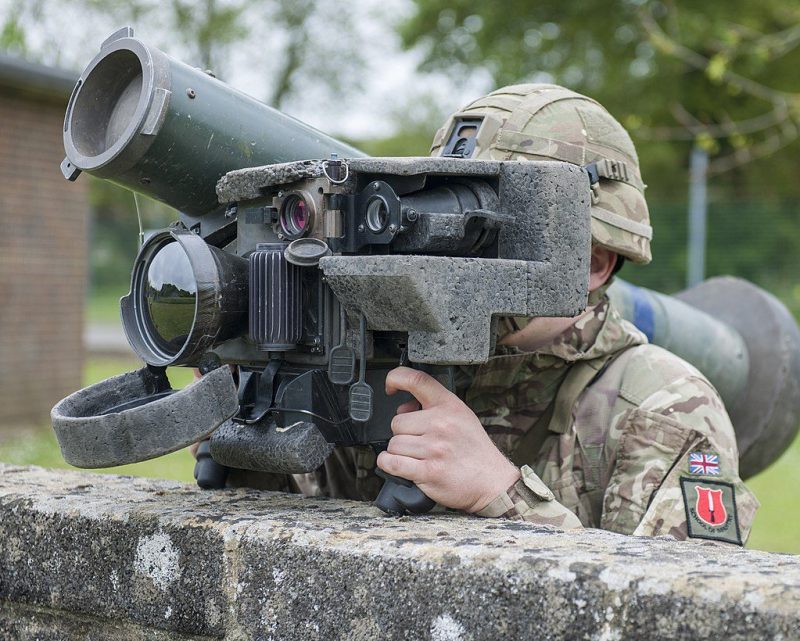
The CLU is also being used in surveillance operations. The standalone mode usage of the CLU proved effective in target detection and battlefield reconnaissance when deployed in Afghanistan and Iraq. The US and coalition forces have fired more than 2,000 rounds.
Launch Tube Assembly
The gunner and the ammunition bearer carry a disposable tube called the Launch Tube Assembly, which houses the missile and protects the missile from harsh environments. The tube also has built-in electronics and a locking hinge system that makes attachment and detachment of the missile to and from the Command Launch Unit a quick and straightforward process.
Missile
The Javelin uses a tandem-charge-shaped warhead to penetrate tank armor and is designed to defeat reactive armor. This, coupled with the top-down attack approach the missile takes(to hit the roof armor of the tank, the weakest armor on the vehicle), means no tank in the world can survive a hit from a Javelin.
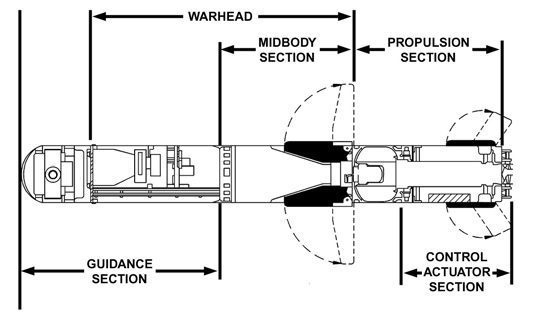
The FGM-148 Javelin’s HEAT warhead can defeat modern tanks by hitting them from above where their armor is thinnest and is also helpful against fortifications in a direct attack flight.
The Javelin uses a shaped charge warhead that weighs 8.4kg (18.5 lb) and has a diameter of 150mm (6 inches). That shaped charge is mighty, as it can punch through 1200mm (48 inches) of RHAe (Rolled Homogenous Armor Equivalent). That’s stronger than the best TOW (Tube launched, Optically guided, Weapon system) and ATGM (Anti-Tank Guided Missile).
History
In 1984 the US Army put out a scope for proposals for a one-man portable anti-tank weapon to replace the M47 Dragon anti-tank missile. The idea was that it be both fires and forget (have a missile internal guidance system) and be able to fire from inside a structure. FGM-148 Javelin intended to be able to defeat the projected adversary armor of the time.
In 1989, the US Army awarded a contract for the development of a Javelin as a replacement for the Dragon system. The Javelin joint venture was formed by Texas Instruments (now Raytheon Missile Systems) of Dallas, Texas, and Lockheed Martin Electronics and Missiles (now Missiles and Fire Control), of Orlando, Florida, US.
The Javelin entered full-rate production in 1994, and the system was first deployed in June 1996 by the US Army at Fort Benning, Georgia.
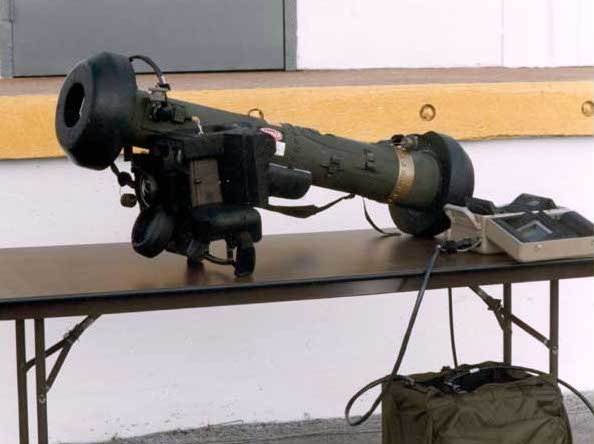
Further development of the system resulted in a higher missile range. It was achieved in February 2013 after the missile hit a range of 4,750 meters. Five Javelins were successfully fired as part of the joint exercise called Yudh Abhyas between the Indian and US armies in June 2013.
A Javelin missile was successfully test-fired from a turret at Cranfield Ordnance Test and Evaluation Centre (COTEC) in May 2014. The Javelin JV demonstrated a missile launch from a wheeled vehicle’s remote weapon station in July 2014. The Javelin missile was fired from a Titan unmanned ground vehicle using Kongsberg remote launcher in September 2019.
Combat usage
As of 2019, the FGM-148 Javelin system had been used in around 5,000 successful engagements, mainly in Afghanistan and Iraq. It was widely used with the US Army and Marine Corps and the Australian Special Forces during Operation Iraqi Freedom and in Afghanistan.
Ukraine war
The Ukrainian Army is widely using the Javelin anti-tank missile system against the Russian tanks and armored vehicles during the ongoing Russia-Ukraine crisis. There are reports that Ukrainian forces have achieved a more than 90 percent kill rate when employing these missiles in the conflict. Alongside the NLAW system, it has been the most popular anti-tank weapon in this war.
Variants
The FGM-148 Javelin Weapon System has been incrementally upgraded, resulting in several variants and production blocks.
- FGM-148A: initial version
- FGM-148B: an improved version
- FGM-148C: a further improved version
- FGM-148D: export version
- FGM-148E: the result of a project called Spiral 1: it replaced electronic components in the control actuator section of the missile for cost and weight savings. Production started in 2017.
- FGM-148F: the result of a project called Spiral 2: fitted with a multi-purpose warhead. Production started in May 2020.
- FGM-148G: the expected result of a project called Spiral 3: it will develop a new launch tube assembly and battery unit. It will replace the current gas-cooled seeker with an uncooled seeker in the missile’s guidance section. Production missiles will be designated FGM-148G.
Operators
More than 50,000 Javelin missiles and 12,000 CLUs are currently in service with the US armed forces and 19 allied nations. Javelin is expected to be operational in the US until 2050.
FGM-148 Javelin and other anti-tank weapons
Its main advantages are portability, fire-and-forget option, flight profile, and ability to fire from inside a structure. At the time and even still, Soviet/Russian doctrine for dealing with anti-tank missiles was to saturate the firing area with machine guns or artillery fire. Each of Javelin’s characteristics helps it defeat this.
Portability means that a single operator can use it. Previous systems had to be set up on tripods. It took more people to move them. It made them susceptible to being hit. With Javelin, you can step out of cover and fire. Fire and forget means you can leave the area as soon as you fire, and the guidance system will still work to hone the missile on the target. Previous types would require the operator to stay with the system set up to guide the missile to the target, making you susceptible to counterfire.
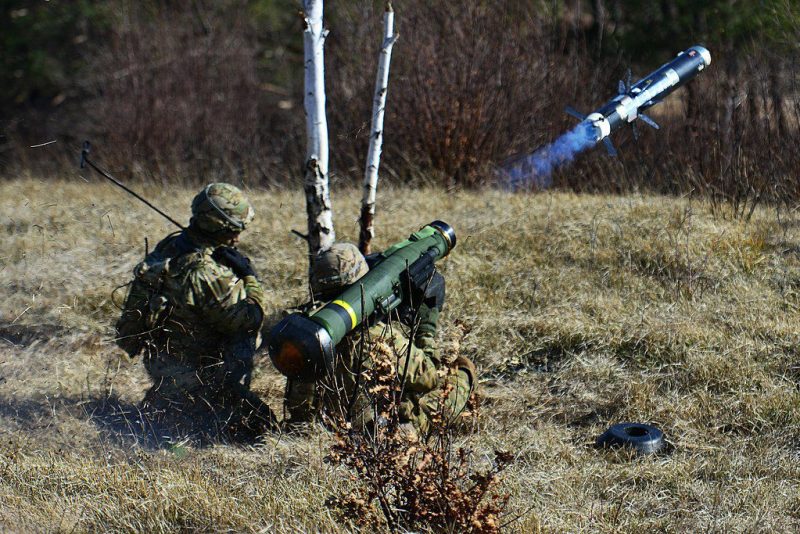
The flight profile has two settings direct or top attack. Top attack lets the missile fly up and down on the weaker roof armor. It also makes it harder to see where the missile came from.
Also aiding in staying hidden is the system where the missile’s main engine doesn’t fire until after the missile has cleared some distance from the launcher. That has a couple of advantages. First, it lowers the visibility of the firing location protecting the firing team. The colossal advantage it provides is the ability to fire from inside a structure. By the main motor not igniting, there is a much lower backblast from the engine firing, which would kill most room occupants on traditional systems.
You can imagine that in urban warfare, the ability to fire a homing missile that one person can carry from any building window is very difficult to deal with, especially when the warhead on that missile is specifically designed to destroy the tanks in question. If tanks are scissors, Javelin is rock. And it only takes two weeks to train someone to use it too.
Technical specifications
| Designer: | Texas Instruments and Martin Marietta, United States |
| Designed: | June 1989 |
| Manufacturer: | Raytheon and Lockheed Martin, United States |
| Produced: | 1996-present |
| Weight: | 22.3 kg (49 lb) – ready to fire 6.4 kg (14 lb), detachable Command Launch Unit (CLU), and 15.9 kg (35 lb) missile in a launch tube |
| Length: | 1.2 m (47 in) |
| Caliber: | 127 mm (5.0 in) |
| Muzzle velocity: | classified |
| Effective range: |
|
| Guidance: | Infrared homing |
| Sight: | Optical sight & thermal imaging |
| Warhead: | Tandem-charge HEAT |
| Blast yield: | Penetration: 750 mm+ RHA 600 mm+ RHA behind ERA |
| Cost: |
|
| No. built: | 45,000 missiles (12,000 CLUs) |


